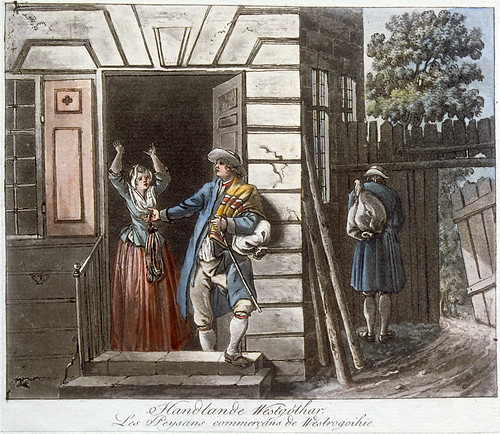
Travelling salesmen from Västergötland, Sweden, a photo by Swedish National Heritage Board on Flickr.
Digital telling, as is said in The Educational Use of Digital Storytelling, is "its most basic core is the practice of using computer-based tools to tell stories." It is such a wonderful website in which I can not only practice my English listening skills but also broaden my knowledge. Because in this website, the story is mostly told in English and then when you click the "explore stories", you will find all kinds of stories categorized by such kind as art, history and so on. It is basically another TED for me! Moreover, when you are listening to the story, there will be slides shown in the screen to illustrate the content concretely. So it won't make audience feel boring or get anxious once they miss something from listening.
Digital telling is just a tool made for language learners in my opinion. Teachers could directly use the materials in the website to let students listen and take notes in order to practice their listening. And then they can write reflections based on the notes, and in this way their writing could be practiced. Or teachers can make their own story tellings, such as a preview or a review of the course so that students can have a blueprint of what they are going to learn or what they have learnt. Students can also make their own storytellings to share their experiences, opinions, and the most important things is, as a language learner, their speaking skill is practiced! Such a wonderful tool!




